Journeying through a largely hidden world at the base of England's biggest sea cliffs, where few ever tread and the tidal range is the second highest on the planet, the traverse of the Exmoor Coast is a unique and esoteric adventure. A multi-day mission of slippery boulder hopping, sustained scrambling, and frequent climbing, it can perhaps best be described as horizontal sea-level mountaineering. With the water rising to cover the route twice a day, and long committing sections where escape would be difficult at best, time is always pressing, and conditions rarely favourable. It's fair to assume the Exmoor Coast Traverse isn't often attempted, and successes must be rare.
In September 2023 a team of five, Jim Blackford, Steve Gibbs, Dan Osmond, George Allen and Arthur Andrews, managed to complete a two-day traverse. Ever up for celebrating unusual achievements, we were keen to learn more.
UKC: The Exmoor Coast Traverse is an odd one – legendary to those in the know, but pretty much under the radar for the majority of climbers: How did you first hear about it, and what was it about what you heard that attracted you?
We recall seeing it on the BBC2 series 'Coast' (July 2009). It looked to have all the ingredients of great adventure climbing. You traverse beneath the highest cliffs in England, race the second strongest tide in the world – which rises over 12m twice a day to flood the entire route – in one of most inaccessible places in the country, navigating wildly scenic terrain; with endless caves, arches, stacks, zawns and waterfalls.
Where else in Britain can you embark on a multiday, committing, self-supported sufferfest?
We felt like prey animals who'd been chased by a pack of wild dogs for 54 hours – the tide truly never sleeps
Did you research other teams who've done it (there can't be many) and did you approach anyone for tips and advice?
You've got Terry Cheek's website and Kester Webb's book; The Hidden Edge of Exmoor, with plenty information from the original traverse back in 1978. Ian Peters describes the Inner Sanctuary as a day trip in the 1989 North Devon & Cornwall guide and Dan Bailey has a write up of The Claw in his Ridges of England,Wales & Ireland guide. The Claw makes a good introduction to Exmoor, as it takes just four hours and finishes at the pub!
Dave Pickford and Grant Farquhar tried to DWS the traverse in a day – with a bit of swimming – but had to bail after 18 hours with hypothermia and exhaustion. There's also a write-up of the 2016 traverse; they had bad conditions but made it through with the help of passing kayakers. Given our strategic approach to it – by reccying sections first – we didn't feel the need to ask others for information.
How long is the route?
Around 22.5km from Foreland point to Combe Martin, following the coastline, but this excludes endless contours into zawns – plus years off our life expectancy from stress! Around a third is continuous scrambling and climbing, while the rest a mixture of tricky rock steps, boulder-hopping and clambering over seaweed covered rocks, delivering a full-body workout.
What grade would you give it - if that concept even makes sense in this case?
It's better suited to an Alpine grade, as the length and commitment factor (for some sections) eclipses any single hard moves, plus you're climbing with a rucksack on, at speed, placing minimal gear and route-finding as you go. Conditions come into play too; for example, Flying Buttress on our reccy was dry, with suitable limpets for footholds, rendering it VS 5a, while on our complete traverse it was plastered in dripping green algae and devoid of limpets, so every bit E1 5b! Overall, we'd give the full traverse a modest upgrade, to HVS 5a, unless you bring your own limpets!
Speed is safety, just as it is in the mountains. We were dangerously close to getting cut off on two of the tidal cruxes
How long did it take you?
We started 10:21 Friday 1st September 2023, finishing 16:05 Sunday 3rd, so that's 2 days, 5 hours, 44 minutes. Encompassing five low-tides, with beguiling climbing 12am – 2am the first night and more prosaic route-finding 12am – 4am the second night.
What sort of prior experience had team members had of this quirky but testing stretch of coastline, before deciding you fancied the ECT?
We're from Cornwall, Devon, and Bristol, though Jim recently moved to Cheshire. Living close to Exmoor is an advantage; conditions are fickle and it helps to seize any opportunity, invariably at short notice.
Jim grew up in Plymouth and from aged seven recalls scrambling sections of coastline with his father, once winning 50p for completing the traverse from Carbis Bay to St Ives!
For the rest of us, it was wholly new territory, which Jim somehow talked us into. Though our combined experience climbing in the Valley of the Rocks and teetering up the crumbling Main Cliff at Blackchurch gave us an impression of the impermanence of the terrain.
Once you'd started planning it, were there any bits you reccyed in advance?
We ambitiously first attempted the traverse April 2022, with icy cold seas and higher than favourable swell. It was serious, especially the boulder hopping, with a rucksack and gear-laden harness. We bailed at Hollowbrook, returning via Wringapeak back to Woody Bay.
Subsequently, Jim and Steve did a reccy trip Sept 2022, to scout out the middle section from Hollowbrook to Heddon's Mouth, abseiling down the waterfall from stakes (read: marquee pegs) we placed above! It went well, with all tidal choke points and tricky climbing proving passable, however beyond Heddon's Mouth, we knew little of what lay ahead.
Jim further reccyed other smaller sections, mostly alone; Mother Meldrum's Gut and Duty Point, Sherrycombe Waterfall and Great Hangman Gut, plus The Claw from Heddon's Mouth.
We'll never forget crossing North Cleve Gut through the early hours, with a full moon illuminating gargantuan cliffs above and kelp glistening below
It seems as much a logistics challenge as a physical one (though that's not to downplay the physical): can you talk us through what went into planning it?
Before our first attempt, Jim gave us a Powerpoint presentation over Zoom, with the history of the traverse, previous attempts and likely cruxes of the push. We produced a decision tree of low-tide crux points, escape routes, potential bivvy spots and the distances between them, concluding it might take five-to-six low tides; three days if we climbed at night too. Spring tides in the southwest are around midday or midnight, so we could climb twice at night and three times during the day.
Unlike a multiday Alpine route, we considered it nonsensical to carry three days' food and moreover didn't fancy drinking farmland runoff from waterfalls along the cliffs, so a big part of the logistics included placing two food/water drops – hidden in rocks above the high tide – at Woody Bay and Heddon's Mouth. Some might argue we've not made a true 'Alpine' ascent by essentially using advanced camps!
Despite complex logistics, there's no denying the ECT is very much a physical challenge, with a particularly cardio-intense first day. Despite our best efforts, we were still dangerously close to getting cut off on two of the tidal cruxes.
It's not really conventional climbing – though there's plenty of climbing on it. Would you agree it's more of like mountaineering-on-sea?
It's sure the antithesis of pulling hard on the grit, more adventure climbing. Though to be honest less climbing, more adventure scrambling. That and adventure suffering. Lots of choss, with a central theme of not drowning.
There's a few harder pitches, but none that are technically out of reach of most climbers. The challenge comes from moving efficiently – with lots of soloing and simul-climbing – over mostly easy, but serious terrain, including lengthy sections at night. Due to the perpetual race against the tide, speed is safety, just as it is in the mountains. Towards the end, we felt like prey animals who'd been chased by a pack of wild dogs for 54 hours – the tide truly never sleeps.
The Bristol Channel famously has the second highest tidal range in the world, and these tides are sucking at the foot of some very big cliffs along the Exmoor coast. In terms of weather, tides and general conditions, what factors need to come together for a successful traverse?
Favourable conditions are vanishingly rare and demand patience. We ultimately landed the best tide in two years and high pressure – to favourably push the seas even lower – yielding fine weather and critical low swell. Over a long weekend too. Contrary to our initial April 2022 attempt, it was certainly a bonus having warm seas by September, to reduce the seriousness of falling in. We blank booked our calendars two years ahead, across all weekends with exceptional spring tides, then made the decision to go for it at just two days' notice.
What did you find the most challenging aspect of the journey?
Committing to it. After a failed first attempt and various reccy trips, we increasingly lost interest in it. It's always easier simply heading to Pembroke! The night climbing was pretty rough too; the rock is wet and it's hard to spot a viable line through difficulties by headtorch, plus the perpetual fight against fatigue through the early hours.
Typical multiday Alpine routes are awash with premade bivvy spots, but none such for Exmoor. An exceptional spring low yields a comparable spring high, so suitable bivvy spots are in short supply, especially when sandwiched against towering cliffs. We scouted out candidates for each night, by the Hollowbrook and Sherrycombe waterfalls, but you're essentially sleeping on fresh rockfall, which is uncomfortable at best. Getting to sleep 3am the first night and 5am the second, certainly had its toll. At least you're so tired your mind doesn't wander onto the risk of more rockfall from above.
Can you describe the most difficult pitches of climbing?
Be patient and wait for the right conditions, as these will determine your success more than anything else
Tricky pitches include a section of Yes Tor at soft VS, Black Wall at stiff VS, and Flying Buttress, which offers either a VS-to-E1 conditions-varying corner on the lowest of tides, or a perpetually wet HVS hand-jamming traverse above. During our September 2022 reccy we embraced the HVS jamming, then had time to downclimb and try the corner too, while on our September 2023 full traverse we gambled on the corner, which was quicker to get five people up, albeit now devoid of limpets, covered in algae and markedly harder.
Contrary to the 1978 expedition, the Valley of the Rocks is no longer the crux. People used to traverse East Inlet, which Terry Cheek did at E1, but it looks desperate for even that grade now. Thankfully you can boulder-hop it now, on a very low tide. The hardest climbing is certainly Flying Buttress; you'd want to be confident at HVS for that. The scenic 'A' Cave traverse and Crock Point are more like HS 4b.
How much of it did you do roped/pitching?
We soloed 20+ pitches of Mod to VDiff and simul-climbed about the same again, including the hard section beneath Valley of the Rocks (Mother Meldrum's Gut), the 'A' Cave, Great Bastion and most of Yes Tor. We pitched Flying Buttress, Black Wall, Crock Point and the crux pitch of Yes Tor. We made 5-to-6 short abseils - some avoidable, but all necessary for speed. We took a 30m single rope per team of two/three.
The remainder is a mixture of boulder-hopping and scrambling, though there's a few lengthy pebble beaches you need to run, to make tidal choke points. Not easy in B2 boots with a rucksack on!
A lot of the Exmoor coast looks like huge vegetated slopes, from above, but some of the rock architecture down at sea level is monumental. What were the most scenic locations you found yourselves in on the route?
The 'A' Cave is rather photogenic, which sadly I imagine few people ever see, bar kayakers. The huge rock arch of Wringapeak too. During our full traverse, it was certainly memorable spending both nights bivvying by waterfalls.
We'll never forget crossing North Cleve Gut through the early hours, with a full moon illuminating gargantuan cliffs above and kelp glistening below.
It's a multi-day journey; so where did you sleep?
We slept four times in total: an hour in the Lime Kilns at Woody Bay, five hours at Hollowbrook waterfall, a few hours at Heddon's Mouth and four hours at Sherrycombe waterfall. The latter is well hidden, invisible from both sea and land above. Interestingly, during WWII, a Nazi U-Boat would periodically refill water here, undetected.
At how many points is there path access right to/from the sea, and how easy would it be to escape from some of the less accessible parts of the traverse, if something went wrong?
There are around twenty or so along the whole traverse, though the more challenging climbing sections predictably offer fewer and more involved options for escape. Many are arguably more dangerous than attempting swimming out. There's nothing between Wringapeak and Hollowbrook and after Hollowbrook until the Claw; it's not far, but once the tide has risen for 90 minutes you're stuck. There's often no ledge or slope above the high tide line either; a nine-hour hanging belay would be your only option besides a very long swim.
Once you leave Heddon's Mouth, there are no amenable exits until Bosely Gut, especially given we climbed that section at night, then it's 1½ miles to Red Cleave, where Grant Farquhar escaped. Past that, there's little until Sherrycombe waterfall; not that that's an exit, more just a place to (uncomfortably) sleep and avoid drowning should you get stuck.
Is there phone reception down along the tide line should you need help?
There's sporadic phone reception, but you wouldn't want to rely on it. Annoyingly, there was enough for Jim to crack on Kanye for motivation in the early hours of the second night!
Did you liaise with the coastguard to avoid confusions like unwanted rescue?
We informed the Milford-Haven coastguard, in case people spotted us below the cliffs and rang for rescue. We further set callout times with friends/family and periodically updated them.
Did you take any unusual bits of kit?
For our chilly April 2022 failed attempt, we took a couple of light ice axes and two stakes, in the horrid scenario we'd need to bail via one of the soily escape gullies, however for our warmer Sept 2023 full traverse, we regarded swimming invariably the more favourable exit strategy.
Pretty sure I can guess the answer, but go on - did you all manage to stay dry?
Arthur got half submerged in the first five minutes, on an abseil with a swing! Steve did the best at staying dry. No one waded in water – even shin-deep – to avoid difficulties, but with mercilessly dodging rockpools, the odd foot-slip was inevitable.
Best and worst memories?
Waking up to the remote and picturesque waterfalls. It's high tide at dawn; you can't climb until it retreats, so you relax and take it all in.
The oddity of squirming down the through-cave, 60m in length under the headland to reach Hollowbrook. It's not often you get to do caving while climbing.
A chance encounter with a family on the beach at Coombe Martin, who spotted us looking out of place wearing harnesses. The father quizzed us as to whether we'd just done the ECT. We were amazed he'd even heard of it!
It was great doing Exmoor as a five. In the Alps you're often climbing as a two or three, but with five it felt less serious if things went wrong, plus the added benefit of more entertainment and camaraderie.
The misery of the shiver bivvy during our April 2022 failed attempt. We awoke to a dazzling sunrise over Wringapeak, from our perilous ledges at Big Bluff. The red glow gave us an assurance that warmth would soon come.
After 52+ hours of exhausting climbing, we pulled over a steep rocky step nearing the beach at Coombe Martin, to a naked old guy standing over us, with a huge ring piercing his privates. We're no prudes, but he cornered us into a conversation. Utterly exhausted, we had limited capacity for pleasantries.
Did anyone have any near misses?
Steve was the only one to keep his feet dry, though at quite an expense, acrobatically jumping onto a boulder beach to avoid a mere rockpool, sustaining a twisted ankle 2am the second night, between tidal choke points. A few Ibuprofen later and the sharing out of his pack delivered a determined Steve, emboldened to carry on. He hobbled the next mile to Sherrycombe, on a fast incoming tide. We didn't really appreciate how serious the situation was, until we'd completed the traverse the next day!
George wore a pair of Doc Martens over more judicious B2s or approach shoes. At one point he fell around three metres down a VDiff corner and miraculously just bounced and got straight back on!
In terms of logistics but perhaps more importantly safety, do you have any advice to others who may be interested in giving it a go?
Give coastal traversing a go on short sections of Exmoor first. Don't attempt it with cold seas like we first did and don't underestimate the tides; always retreat on a low, unless you can guarantee getting to your destination before it turns. Be patient and wait for the right conditions, as these will determine your success more than anything else. Be prepared for as much adventure scrambling as adventure suffering, including lengthy sections at night. Carefully plan your logistics and know the escape routes, though be warned, many are more serious than attempting to swim out.
- REVIEW: Mammut Trion 28 pack 29 Apr
- REVIEW: Trekmates Ankle Gaiters 23 Apr
- REVIEW: Rab Muon 50L Pack 9 Apr
- REVIEW: Boreal Saurus 2.0 22 Mar
- REVIEW: The Cairngorms & North-East Scotland 1 Mar
- REVIEW: Mountain Equipment Switch Pro Hooded Jacket and Switch Trousers 19 Feb
- Classic Winter - East Ridge of Beinn a' Chaorainn 12 Feb
- REVIEW: Salewa Ortles Ascent Mid GTX Boots 18 Jan
- REVIEW: Patagonia Super Free Alpine Jacket 7 Jan
- REVIEW: Deuter Fox - A Proper Trekking Pack For Kids 27 Dec, 2023



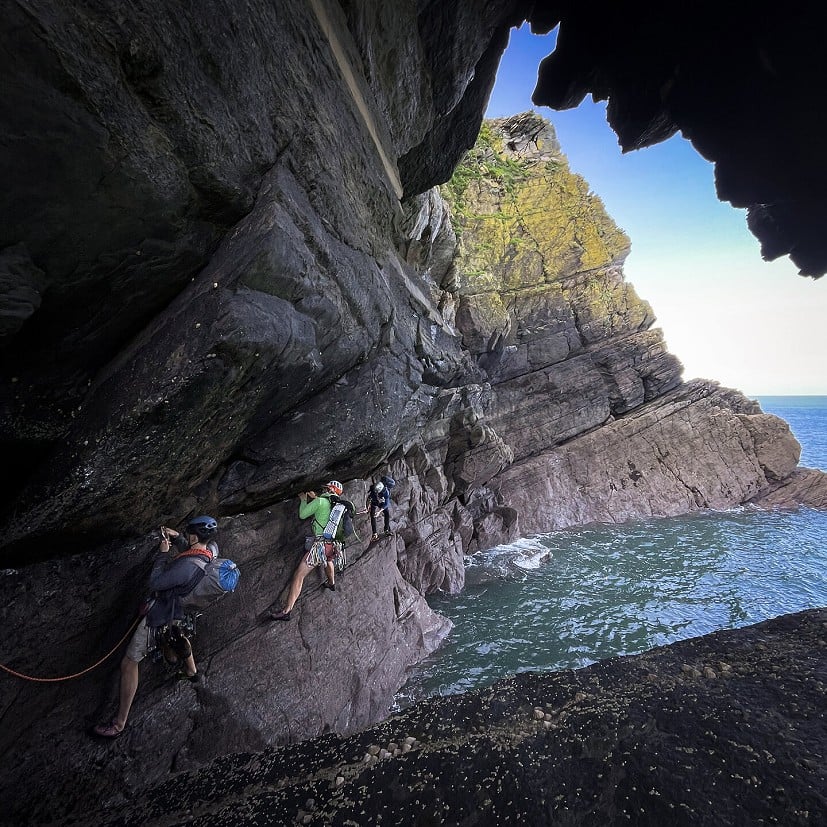
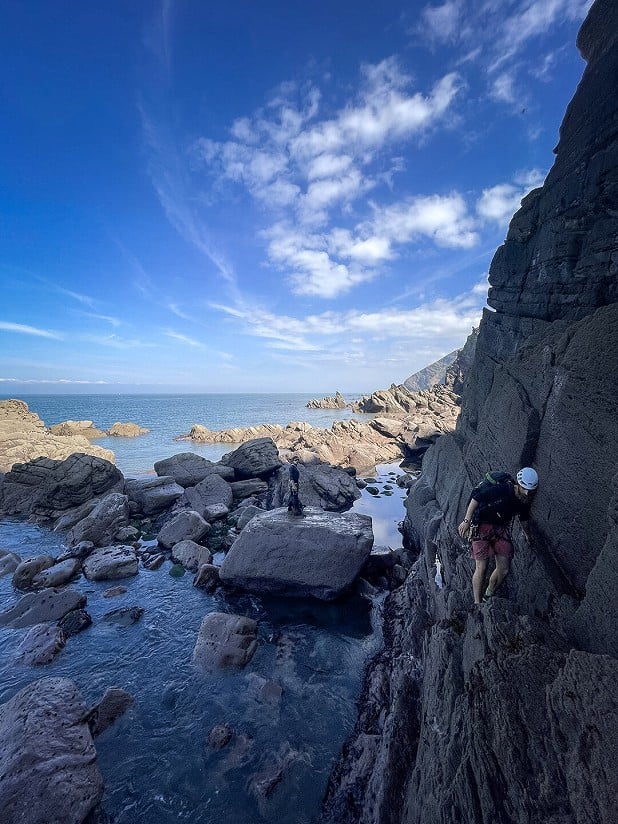

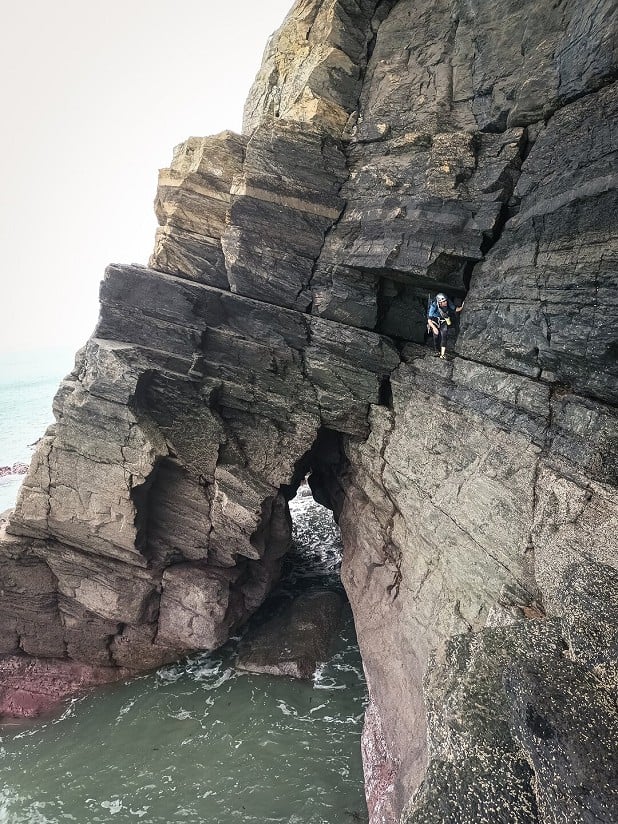
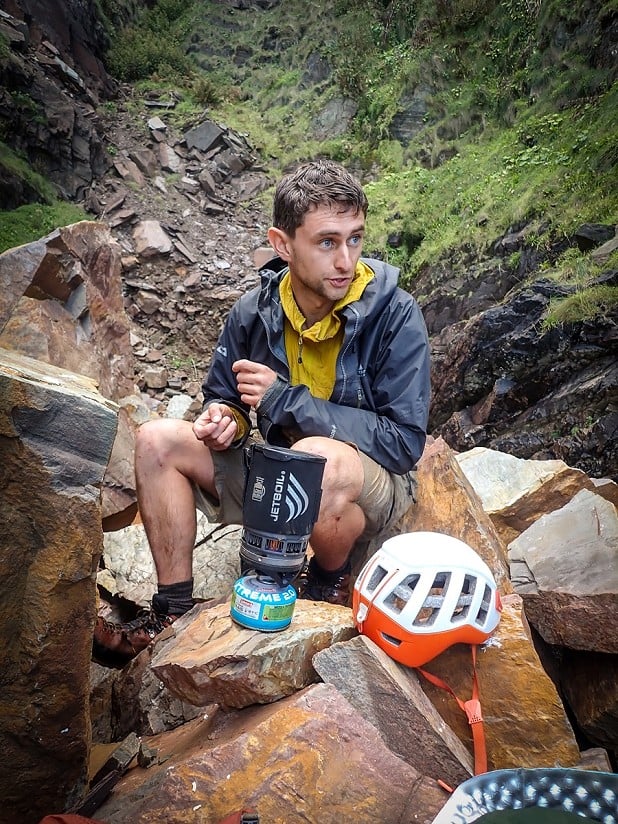
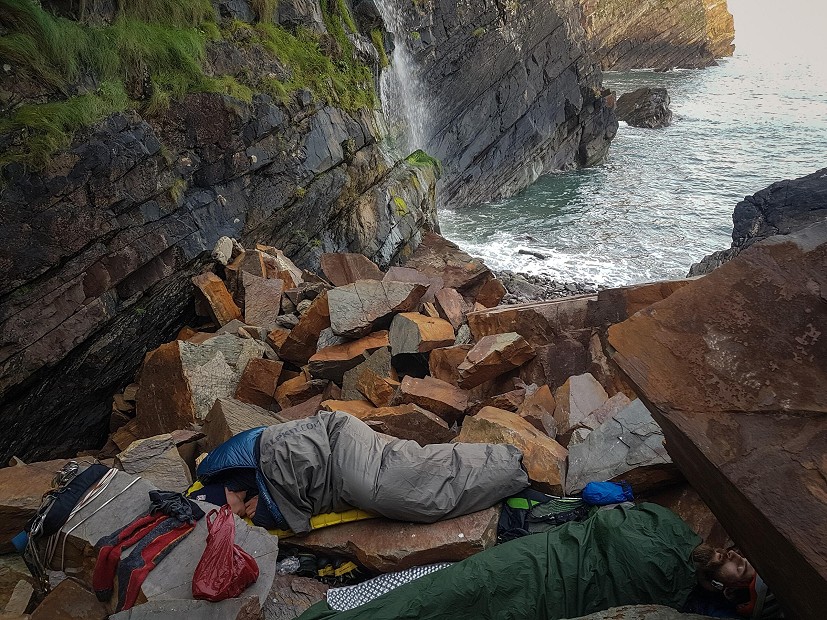
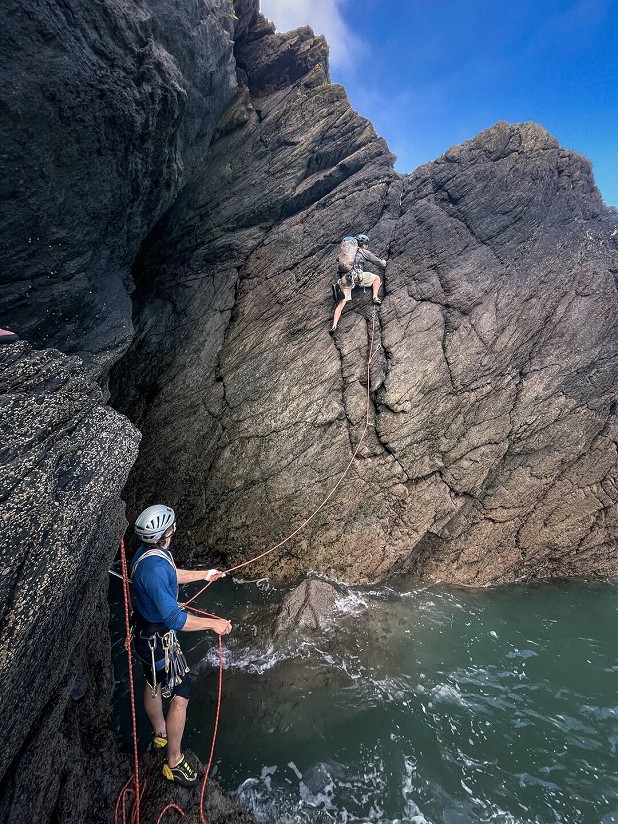
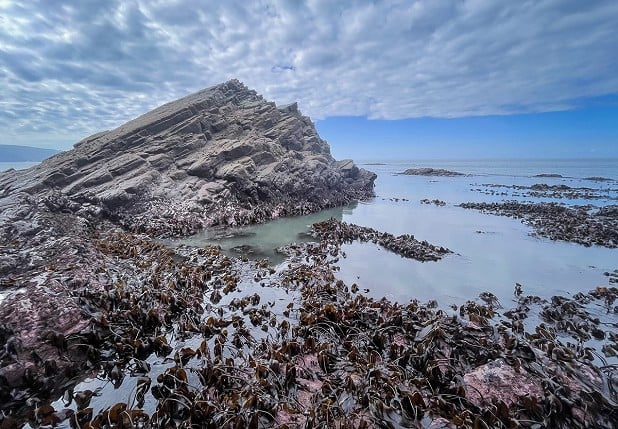

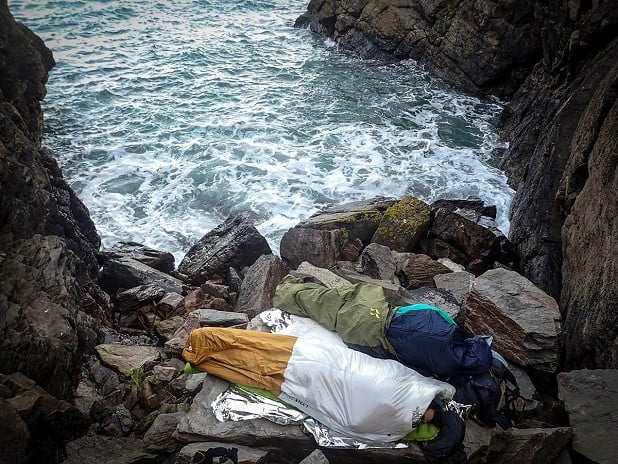
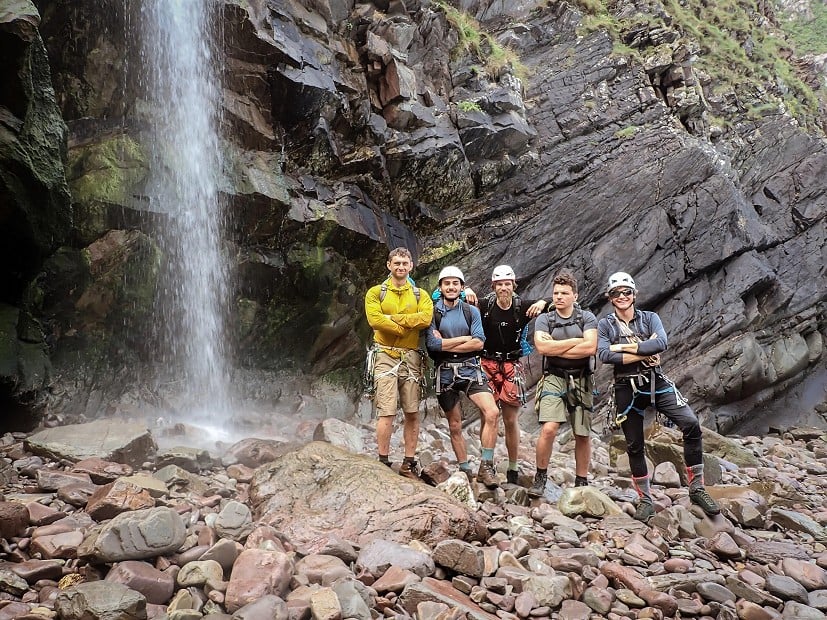



Comments
Top climb with the boys!
Clarks hiking boots did me proud! 😅 Next time will have the B's on.
I can't remember falling down a VDiff but the boys all remember it, a limpit must have popped 🤣
Excellent stuff, and an entertaining article.
I didn't realise it was quite so long, is there a shorter version more commonly done?
Incredible effort!
I wish all my partners would give me a Powerpoint presentation over Zoom with a history of the route, previous attempts and likely cruxes before I went climbing.
Would it be ethical to carry a wet chalk bag with spare limpets in it, or would that count as aid?
Great job, great article - the Cuillin Ridge of the South (but way harder)! :)
I know this had been attempted by Dave Pickford and Grant Farquar a few years ago, good effort getting it done!